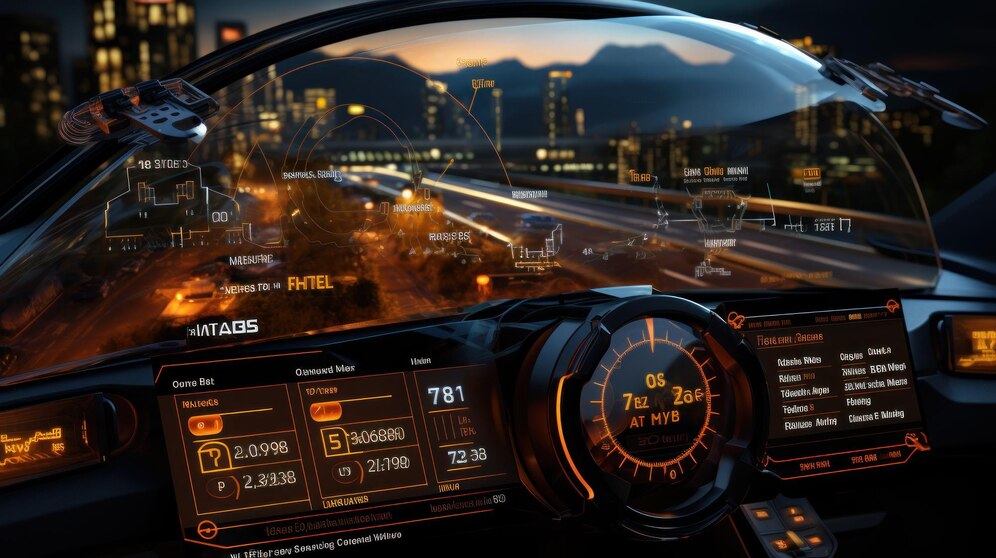The results of the world’s first auto races in the 1860s were documented in local newspapers in England and France. Fast forward to today, and the evolution of technology has transformed how we record and analyze driving performance. Modern technology allows every movement of your car on the track or highway to be automatically recorded and analyzed. One of the most revolutionary advancements in this field is the Performance Data Recorders (PDR).
A Performance Data Recorder (PDR) not only captures video but also tracks GPS coordinates and collects detailed engine data. These devices provide a comprehensive, data-rich picture of your driving performance. This article delves into the world of PDRs, explaining what they are, how they work, and why they are essential for both professional racers and everyday drivers.
What is a Performance Data Recorder?
A Performance Data Recorder is a device installed in a vehicle to capture and store various types of data related to driving performance. It integrates video recording with telemetry data, such as speed, acceleration, braking force, and engine performance. This combination of video and data allows drivers to review and analyze their driving techniques in great detail.
Components of a PDR
- Cameras: Typically, a PDR includes one or more cameras mounted on the vehicle to capture video footage of the road ahead and sometimes the driver’s actions.
- GPS Receiver: This component tracks the vehicle’s location and provides accurate speed and position data.
- Sensors: Various sensors measure engine parameters, acceleration, braking force, and other critical performance metrics.
- Data Storage: A storage device, often an SD card or internal memory, stores the recorded video and data for later review.
How Does a Performance Data Recorder Work?
Capturing Video and Data
A PDR continuously records video from the cameras and simultaneously gathers data from the GPS receiver and sensors. The system synchronizes this information, allowing for a detailed analysis of driving performance. For instance, if you’re reviewing a lap on a racetrack, you can see exactly when you braked, how hard you accelerated, and your precise speed at each point on the track.
Analyzing the Data
After recording, the data can be downloaded and analyzed using specialized software. This software allows drivers to play back the video with overlaid data, providing insights into their driving habits and performance. Key metrics such as lap times, cornering speeds, and braking points can be scrutinized to identify areas for improvement.
Benefits of Using a Performance Data Recorder
Improving Driving Skills
One of the primary benefits of a PDR is its ability to help drivers improve their skills. By reviewing the data, drivers can identify mistakes and learn how to correct them. For example, a racer might discover they’re braking too early or late into a turn, affecting their lap times. By adjusting their technique based on the data, they can shave valuable seconds off their laps.
Enhancing Safety
PDRs also enhance safety by encouraging better driving practices. By understanding the dynamics of their vehicle and how it responds to different inputs, drivers can make more informed decisions on the road. This is especially beneficial for high-performance driving, where precision and control are crucial.
Sharing and Comparing Data
Another advantage of PDRs is the ability to share and compare data with other drivers. This is particularly useful in racing communities where drivers can exchange insights and techniques. By comparing data, drivers can learn from each other and collectively improve their performance.
Documenting Performance
For professional racers and enthusiasts, documenting performance is vital. A PDR provides an accurate record of driving achievements, which can be used to showcase skills or analyze performance trends over time. This documentation can also be valuable for vehicle maintenance, helping to identify potential issues before they become serious problems.
Applications of Performance Data Recorders
Motorsports
In motorsports, PDRs are an invaluable tool for drivers and teams. They provide detailed telemetry data that helps in fine-tuning both the driver’s technique and the vehicle’s setup. Teams can analyze lap times, cornering speeds, and braking points to optimize performance and strategy.
Driver Training
Performance Data Recorders are also used extensively in driver training programs. Instructors can use the data to give precise feedback to students, helping them understand the nuances of high-performance driving. This is particularly useful for new drivers learning the ropes of racing or performance driving.
Everyday Driving
While PDRs are commonly associated with racing, they are also beneficial for everyday driving. Enthusiasts who want to track their performance on the road or at track days can use PDRs to monitor their progress. Additionally, PDRs can be used for safety purposes, recording incidents and providing valuable data in the event of an accident.
Commercial Use
Commercial fleets can also benefit from PDRs by monitoring driver behavior and vehicle performance. This data can help in optimizing routes, improving fuel efficiency, and ensuring compliance with safety standards.
Choosing the Right Performance Data Recorder
Key Features to Consider
When selecting a PDR, there are several key features to consider:
- Video Quality: High-definition video is crucial for clear and detailed analysis.
- Data Accuracy: Accurate sensors and GPS receivers ensure reliable data.
- Ease of Use: The system should be user-friendly, with intuitive software for data analysis.
- Compatibility: Ensure the PDR is compatible with your vehicle and meets your specific needs.
- Storage Capacity: Sufficient storage is essential for recording extended sessions without interruption.
Popular Performance Data Recorders
Some popular PDRs on the market include:
- Racelogic VBOX Sport: Known for its high precision and detailed data analysis.
- Garmin Catalyst: Offers a user-friendly interface and comprehensive performance metrics.
- AIM SmartyCam HD: Combines high-quality video with extensive telemetry data.
The Future of Performance Data Recorders
Technological Advancements
As technology advances, PDRs are becoming more sophisticated. Future developments may include:
- Enhanced Connectivity: Integration with other devices and cloud services for real-time data sharing and analysis.
- AI and Machine Learning: Advanced algorithms could provide more detailed insights and personalized feedback.
- Increased Automation: Automated data analysis and reporting to streamline the review process.
Broader Applications
The use of PDRs is likely to expand beyond traditional motorsports and high-performance driving. With improvements in affordability and ease of use, more everyday drivers and commercial fleets may adopt PDRs for various applications, from safety monitoring to performance optimization.
Conclusion
Performance Data Recorders are revolutionizing the way we understand and improve driving performance. By capturing video and detailed telemetry data, these devices provide invaluable insights that help drivers enhance their skills, ensure safety, and document their achievements. Whether you’re a professional racer, a driving enthusiast, or a commercial fleet operator, a PDR can offer significant benefits.
As technology continues to evolve, the capabilities and applications of PDRs will only expand, making them an increasingly integral part of the automotive landscape. Embrace the power of performance data recording and take your driving to the next level!







